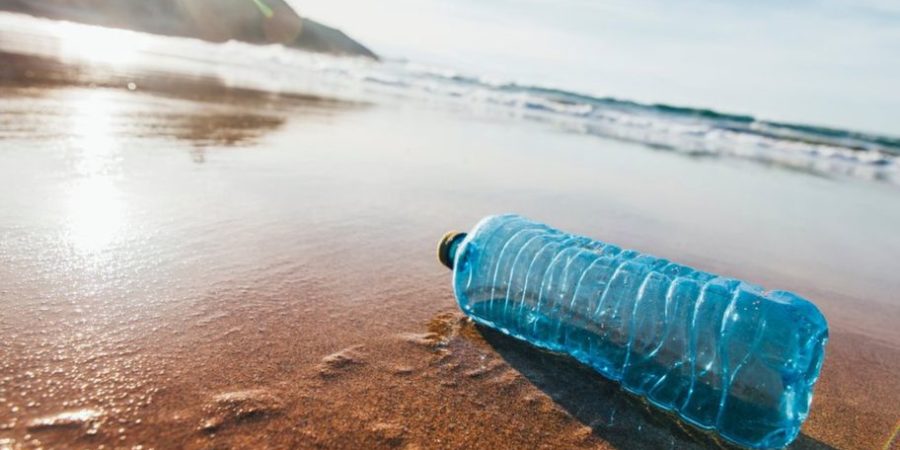Disclaimer: The views, suggestions, and opinions expressed here are the sole responsibility of the experts. No Pacific Daily journalist was involved in the writing and production of this article.
Reused plastic won’t save people

It’s springing up wherever in the design business. However, reused plastic is anything but a silver projectile for the world’s waste emergency.
Recycled plastic is currently in style. In the course of the most recent couple of years, style brands—especially in the direct-to-buyer space—started turning out items produced using disposed of plastic. In 2016, the shoe brand Rothy’s propelled pads produced using reused water bottles. A year ago, the attire brand Everlane made the pledge to swap out all the plastic in garments to reused plastic, likewise produced using plastic bottles. What’s more, simply a week ago, the baggage brand Paravel said it had swapped out all the plastic in its sacks, knapsacks, and pressing 3D squares to the reused kind.
This appears to be a positive development. All things considered, the world is suffocating in plastic. Since the material was first concocted in 1907, 8.3 billion metric huge amounts of plastic have been created to date. Of this, 6.3 billion metric tons was squander. Just 9% of this plastic has been reused, and a further 12% has been burned, a procedure that regurgitates carbon and dangerous synthetic compounds into the environment. The rest presently sits in landfills and our seas, where it will remain for a long time, since plastic doesn’t decay.
For quite a long time, reused plastic was fundamentally lower in quality contrasted with fresh out of the box new plastic. For example, it watched out for pill effectively and was not as sturdy, as Patagonia’s ranking executive of materials advancement, Matt Dwyer, let me know. In any case, as of late, thanks partially to request from customers, providers have figured out how to improve the nature of reused plastic to the point that it is to a great extent indistinct from new plastic. All the more explicitly, makers have idealized the specialty of separating old plastic bottles, which are produced using PET. Modern recyclers transform these containers into pellets called rPET, which would then be able to be improved into new bottles or expelled into strands. This new, improved rPET appears to be a characteristic answer for the world’s waste misfortunes.
Be that as it may, a few specialists trust is anything but an incredible answer for the plastic emergency. At the Fast Company Innovation Festival a week ago, Maxine Bedat—the originator of the New Standard Institute, which utilizes information to evaluate manageability in the style business—raised significant issues with the material.
There’s not enough recycled plastic to go around
I caught up with Bedat to discover progressively about her worries. “At first, it seemed like a no-brainer,” Bedat says. “We thought it was a great solution. But as we dug into it further, we realized there were some major problems with recycled plastic as a solution to the plastic problem.”
For a certain something, there isn’t sufficient reused plastic available, and style brands are presently excitedly attempting to get their hands on a restricted inventory. This is halfway a direct result of our conduct as customers. Around the globe, people’re not reusing our containers at sufficiently high rates. In the United States, under 30% of every single plastic container are reused. In Europe, 58% of containers are reused. In creating nations, where there aren’t excellent waste administration frameworks, rates are far lower. On the off chance that people all made a superior showing reusing our jugs and if governments made punishments for not reusing, there would be more reused plastic available.
At the present time, there is as of now monstrous interest for reused plastic from the packaging business. Numerous enormous shopper bundled merchandise organizations, including Coca-Cola and Nestlé, have vowed to utilize more reused plastic in their bundling. PepsiCo, for example, acquired practically 50% of all jug grade rPET sold in the United States in 2015. Furthermore, each jug the organization makes contains in any event 10% rPET. Tim Carey, the ranking executive of supportability at PepsiCo, says that the organization would purchase more, yet it essentially can’t get its hands on enough of it. “There isn’t enough rPET available,” Carey told The Atlantic. “If there was more on the market we could put more in.”
Some portion of the deficiency comes down to design brands, which have fired gobbling up a great deal of the reused plastic (rPET) on the worldwide market. At an ongoing plastics reusing gathering, Tison Keel, a specialist who dissects the plastics business, clarified that this huge interest for textures produced using reused plastic is representing an issue to packaging organizations that need to make new containers from old ones. They said that there is a now an “endless” craving for rPET from the fiber business, which currently expends 75% of all rPET delivered far and wide consistently.
While style brands showcase their reused plastic items as eco-accommodating and maintainable, it’s essential to take note of that reused plastic is really less expensive than the virgin kind. “The driver is simply cost,” writes Jarden Paben in the trade publication Plastics Recycling Update. “It’s substantially cheaper to produce staple fiber from recovered PET than virgin materials.”
What’s more, given that it is really less expensive to purchase reused plastic than virgin plastic, Bedat doesn’t believe that it is reasonable for design brands to point to their utilization of reused plastic as an indication of their eco-accommodating practices. “It’s actually better for their bottom line to use recycled plastic,” says Bedat. “And by saying their products are sustainable, they might actually be driving up demand for recycled plastic, which makes it more expensive for other industries that also want to use the material.”
As style brands eat into the moderately little supply of reused plastic, they drive up the cost of that material. What’s more, this lone serves to make reused plastic less appealing to different ventures that depend on the material, similar to the plastic jug industry.
Plastic is just one of many problems
Bedat likewise brings up that while a plastic container can be reused commonly, reused plastic garments can’t be additionally reused given our present innovation. As such, the style business isn’t really redirecting these containers from landfills—at any rate not when it’s all said and done. While people can toss a reused plastic container once again into the reusing canister, a reused plastic parka people purchased will in the long run end up in a landfill, where it won’t decay.
So what should brands do? they addressed Everlane’s CEO Michael Presyman not long ago about how it is removing virgin plastic from the organization’s store network. They called attention to that the organization attempts to keep its plastic impression—reused or something else—low. In any case, there are a few articles of clothing, similar to overcoats or activewear, that require plastic. In these cases, reused plastic is far superior than virgin plastic, since it isn’t effectively adding to new plastic on the planet.
Bedat concurs with this, however with two provisos. To begin with, she accepts every single maintainable brand should be in the matter of selling less. This may appear to be unreasonable, however she thinks it is significant for organizations with an inner voice to think about how to develop monetarily without expanding their utilization of assets. This may include making exceptionally tough pieces of clothing that can keep going quite a while. Or on the other hand offering fix administrations, so articles of clothing can be given a second or third life.
Furthermore, also, she accepts that brands ought to at last think past only a solitary material, similar to plastic.
All things considered, plastic is only one piece of a greater picture with regards to supportability: There are additionally carbon emanations, harmful synthetic substances, and water utilization to consider, in addition to other things. So brands ought to put resources into examining the whole direction of an item from crude materials to transfer, and they should lead what is know as an “life-cycle assessment.” This will enable them to figure out what they can change about their assembling to have the greatest effect.
“Material choice is just one small part of the story,” Bedat says. “Plastic pollution is important, but we shouldn’t get so distracted by it we don’t take into account the other ways a garment pollutes.”
Chunk Hemingson was born in Edinburgh, Scotland and studied at the University of Birmingham. He worked as a content writer in a digital marketing firm, during which he wrote number of articles. He is amazing human being. He is currently working on a pacificdaily.us websites as his passion.
Related News

THE KETO DIET MEAL PLAN HAS MET ITS MATCH
Spread the loveWeight loss is made to seem easy since all it requires is exerciseRead More

Study reveals new insight into the role of ocean ice in controlling climatic carbon levels
Spread the loveAnother study has featured the urgent job that ocean ice over the SouthernRead More